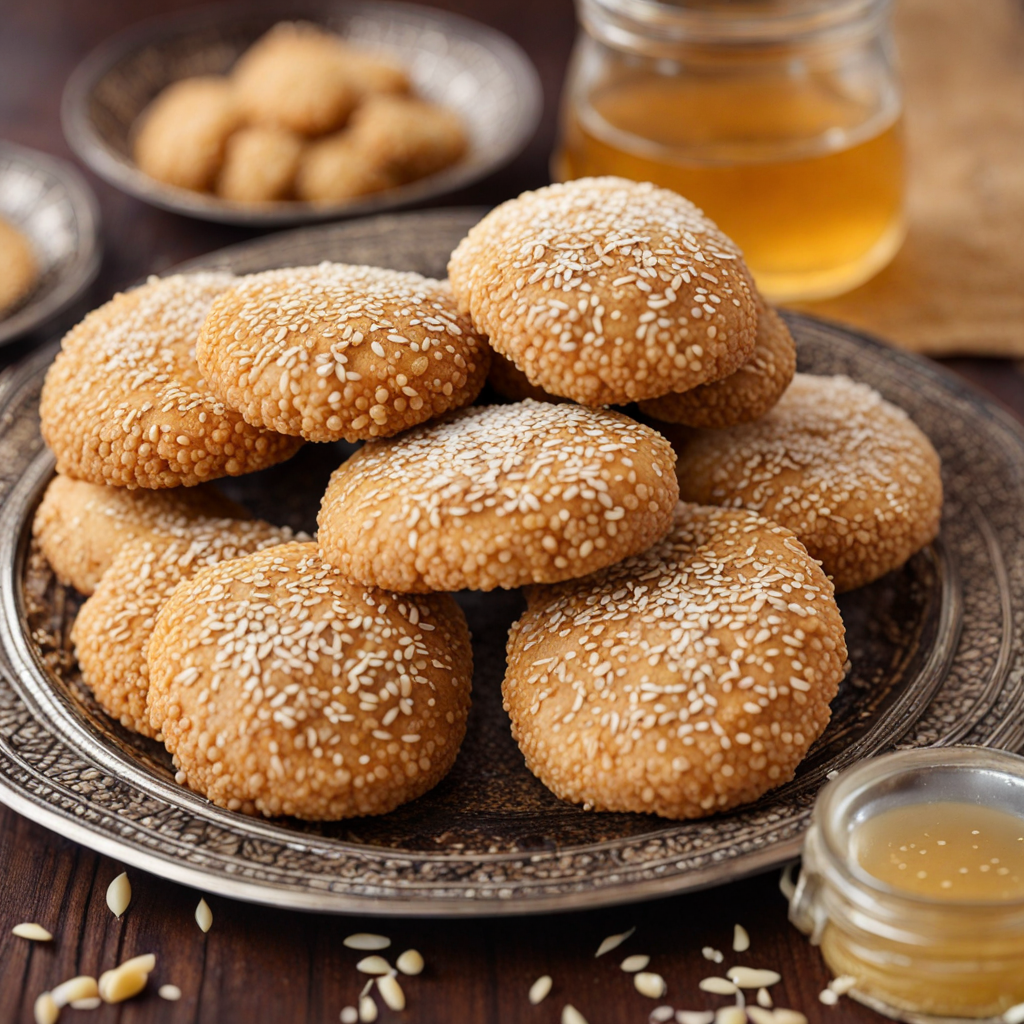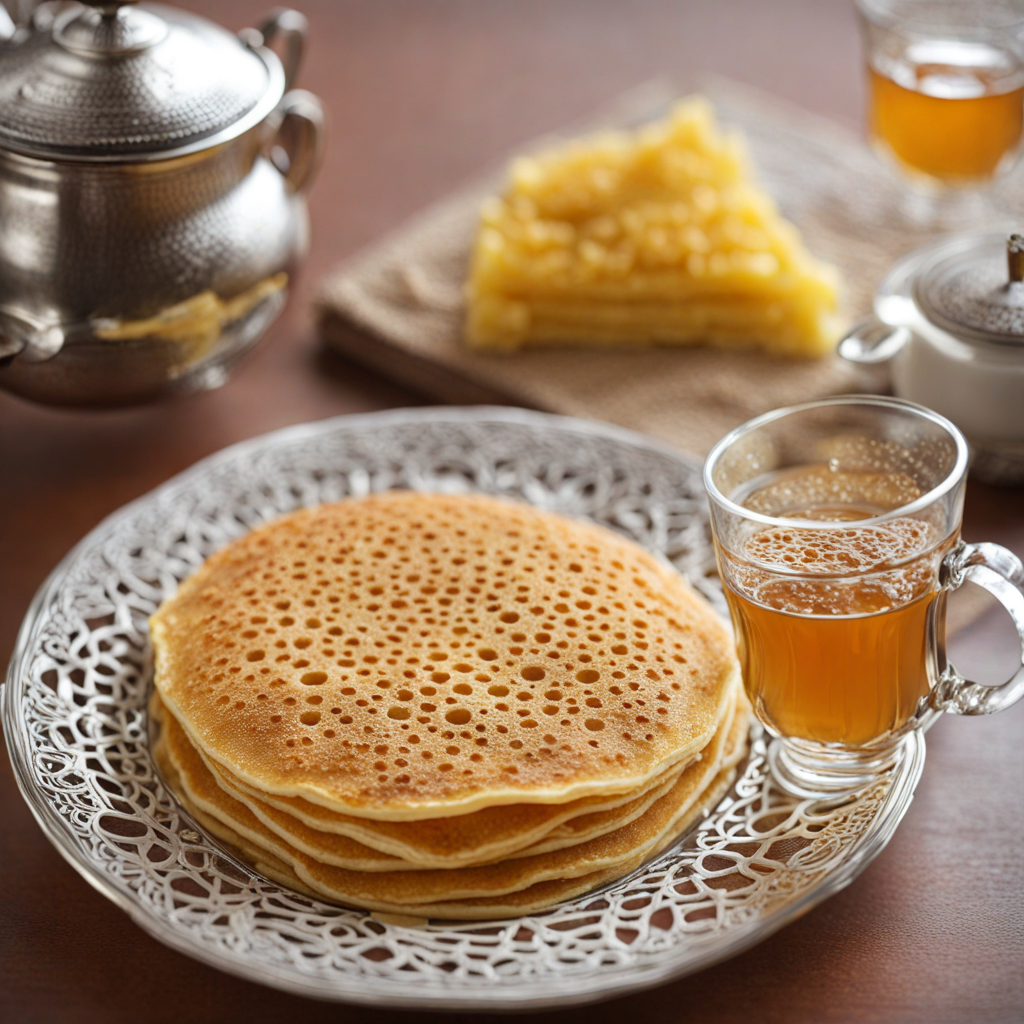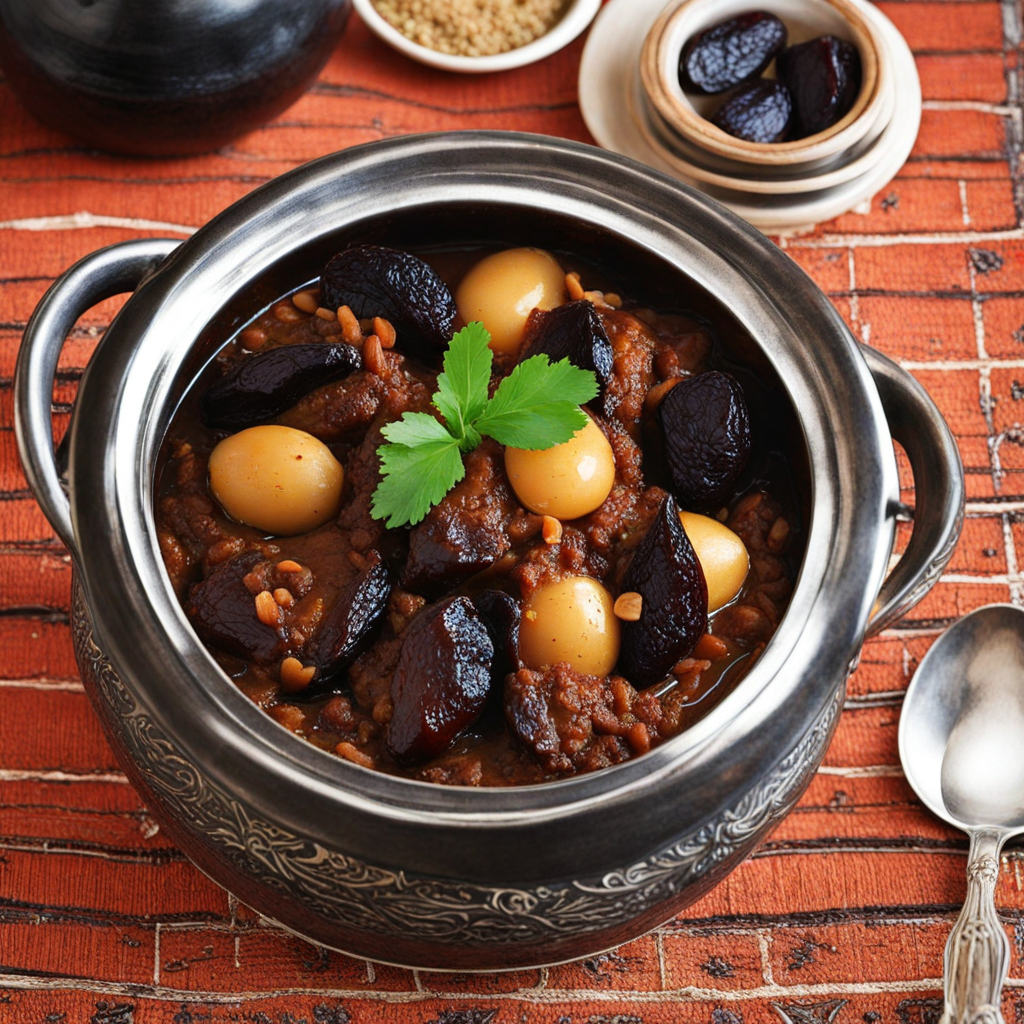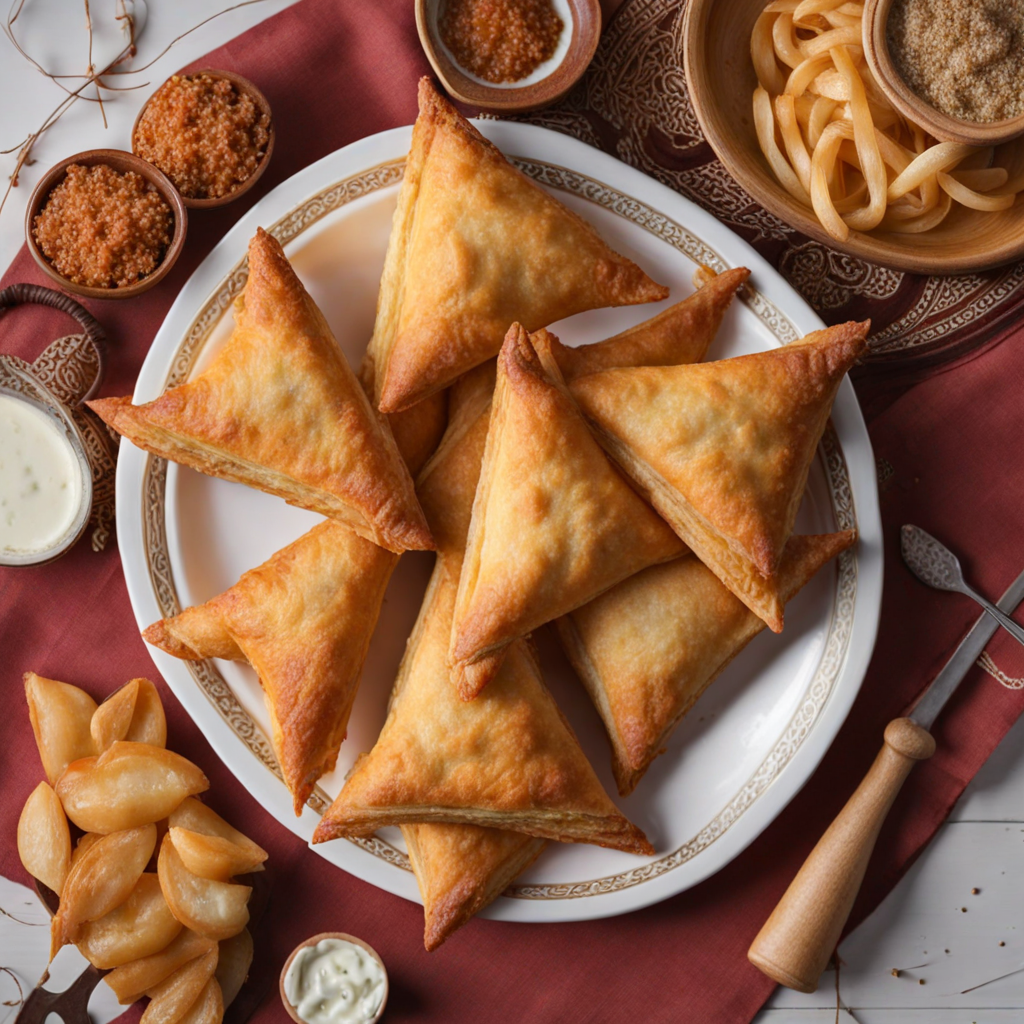Shebakia
Shebakia is a traditional Moroccan pastry that beautifully combines flavors and textures, making it a must-try for anyone looking to explore new culinary experiences. These delicious treats are crafted from a dough that is enriched with a blend of warm spices, such as cinnamon and anise, which infuse the pastry with a fragrant aroma. The dough is rolled out and intricately shaped into delicate, flower-like patterns before being deep-fried to a golden-brown perfection, resulting in a crispy exterior that gives way to a tender, slightly chewy interior. Once fried, Shebakia is generously coated in a syrup made from honey, sugar, and orange blossom water. This sweet glaze not only adds a sticky, luscious finish but also enhances the pastry's flavor profile with floral notes that are characteristic of Moroccan cuisine. The combination of the crunchy texture and the sweet, sticky coating creates a delightful contrast that makes each bite an indulgent experience. Often garnished with sesame seeds, Shebakia is visually appealing and offers a satisfying crunch that complements its rich sweetness. Shebakia is traditionally enjoyed during the holy month of Ramadan, making it a symbol of celebration and togetherness. It is typically served alongside mint tea, which balances the sweetness of the pastry. The experience of savoring Shebakia is not just about taste; it's about embracing Moroccan culture and its vibrant culinary heritage. Whether enjoyed as a festive treat or a daily snack, Shebakia is sure to leave a lasting impression on anyone eager to discover new flavors.
How It Became This Dish
The Rich History of شباكية (Chebakia) in Morocco Origins Chebakia, or شباكية in Arabic, is a traditional Moroccan pastry that epitomizes the rich tapestry of Moroccan culinary heritage. Its origins can be traced back to the 16th century during the reign of the Saadian dynasty, a period marked by cultural flourishing in Morocco. The dish is believed to have been influenced by various culinary traditions, reflecting the country’s diverse historical interactions with different cultures, including Arab, Berber, Andalusian, and even sub-Saharan influences. The name “Chebakia” is derived from the Arabic word “شباك,” which means “window,” hinting at the intricate, window-like shape of the pastry. The recipe itself is a harmonious blend of simple yet aromatic ingredients, such as flour, sesame seeds, honey, and an array of spices, including cinnamon and anise, which contribute to its unique flavor and fragrance. Ingredients and Preparation Chebakia is traditionally made during Ramadan, especially during the iftar meal, to break the fast. The process of making Chebakia is intricate and labor-intensive, showcasing the craftsmanship that Moroccan cooks have perfected over generations. The dough is prepared by mixing flour with a generous portion of sesame seeds, which are toasted and ground to enhance their nutty flavor. The dough is further enriched with a mixture of melted butter and orange blossom water, which adds a floral note to the pastry. Once the dough is prepared, it is rolled out and shaped into intricate patterns. The traditional method involves folding and twisting the dough into a distinctive flower shape that resembles a window or a star. This artistry not only reflects the aesthetic values of Moroccan culture but also symbolizes the beauty and complexity of life itself. After shaping, the pastries are deep-fried until golden brown and then generously coated with honey syrup, often infused with additional spices. The sweetness of the honey, combined with the warmth of the spices, creates a delightful contrast with the crispy texture of the pastry. Cultural Significance Chebakia holds a special place in Moroccan culture and is more than just a sweet treat; it is a symbol of hospitality and celebration. During Ramadan, families and friends gather to share meals, and Chebakia is a staple at iftar tables, representing a moment of joy and togetherness after a day of fasting. The act of preparing Chebakia can also be a communal activity, where families come together to make the pastry, passing down recipes and techniques through generations. Beyond Ramadan, Chebakia is often served at weddings, religious celebrations, and other festive occasions, reinforcing its role as a symbol of abundance and joy. The pastry embodies the Moroccan spirit of hospitality, where offering sweets to guests is a gesture of goodwill and generosity. Regional Variations and Development Over Time As with many traditional dishes, the preparation and presentation of Chebakia can vary significantly across different regions of Morocco. While the basic recipe remains largely the same, certain areas have adapted the dish to incorporate local flavors and ingredients. For instance, in some regions, cooks may add nuts or use different types of flour, reflecting the local agricultural practices and preferences. Over the years, Chebakia has also found its way into contemporary Moroccan cuisine, with innovative chefs reinterpreting the traditional recipe. Some have experimented with modern ingredients or presented Chebakia in new forms, such as Chebakia ice cream or Chebakia-flavored pastries, appealing to younger generations while still respecting the essence of the original dish. Furthermore, the globalization of Moroccan cuisine has led to increased interest in Chebakia beyond Morocco’s borders. As Moroccan restaurants and culinary traditions gain popularity worldwide, Chebakia has made its way onto international menus, introducing a wider audience to its unique flavors and textures. Food festivals and cultural events often feature Chebakia, celebrating its heritage while fostering cross-cultural exchanges. Conclusion The history of Chebakia is a testament to the enduring nature of Moroccan culinary traditions. From its origins in the Saadian dynasty to its contemporary adaptations, Chebakia continues to be a beloved symbol of celebration, hospitality, and cultural identity. It is a dish that transcends mere sustenance, encapsulating the spirit of Moroccan life, where food is a vehicle for connection, storytelling, and sharing experiences. As we savor the rich, honeyed flavors of Chebakia during special occasions, we also partake in a centuries-old tradition that echoes the voices of those who came before us, reminding us of the importance of community, celebration, and the art of cooking. In every beautifully shaped piece of Chebakia lies a story, a memory, and a piece of Moroccan heritage waiting to be cherished and shared.
You may like
Discover local flavors from Morocco







